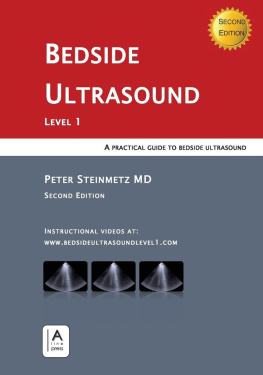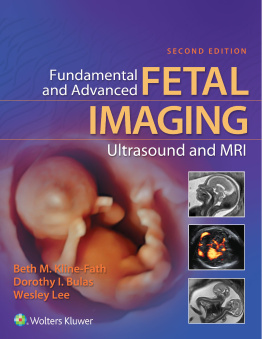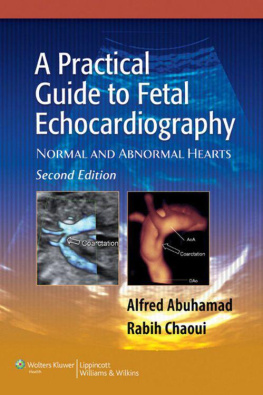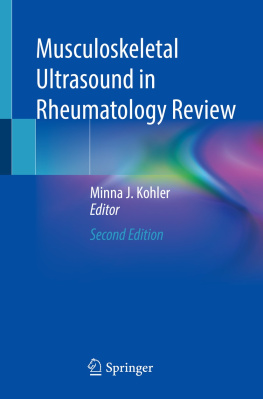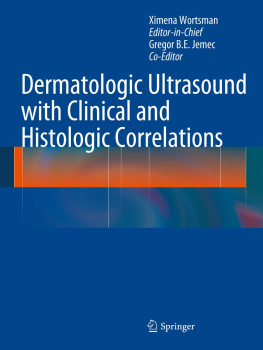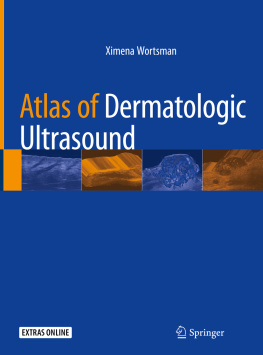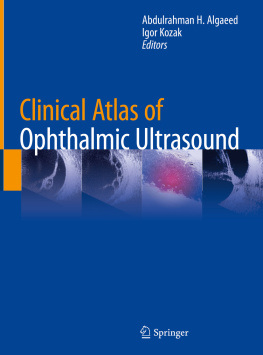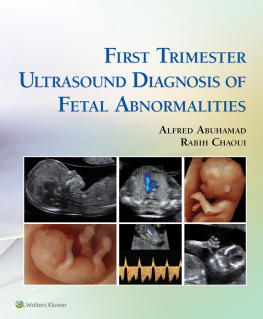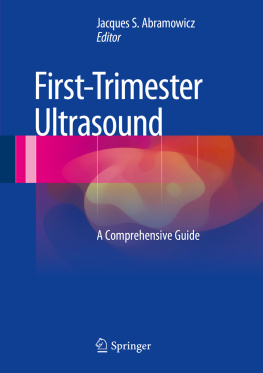Guide

Rabih Chaoui, Kai-Sven Heling
3D Ultrasound in Prenatal Diagnosis

Prof. Dr. med. Rabih Chaoui
PD Dr. med. Kai-Sven Heling
Prenatal Diagnosis Clinic
Friedrichstrae 147
10117 Berlin, Germany
This is a translation of the original book in German:
3D-Sonografie in der prnatalen Diagnostik
Translated by Rabih Chaoui.
ISBN: 978-3-11-049651-2
e-ISBN (PDF): 978-3-11-049735-9
e-ISBN (EPUB): 978-3-11-049400-6
Library of Congress Cataloging-in-Publication Data
A CIP catalog record for this book has been applied for at the Library of Congress.
Bibliographic information published by the Deutsche Nationalbibliothek
The Deutsche Nationalbibliothek lists this publication in the Deutsche Nationalbibliografie; detailed bibliographic data are available in the Internet at http://dnb.dnb.de.
The publisher, together with the authors and editors, has taken great pains to ensure that all information presented in this work (programs, applications, amounts, dosages, etc.) reflects the standard of knowledge at the time of publication. Despite careful manuscript preparation and proof correction, errors can nevertheless occur. Authors, editors and publisher disclaim all responsibility and for any errors or omissions or liability for the results obtained from use of the information, or parts thereof, contained in this work.
The citation of registered names, trade names, trademarks, etc. in this work does not imply, even in the absence of a specific statement, that such names are exempt from laws and regulations protecting trademarks etc. and therefore free for general use.
2016 Walter de Gruyter GmbH, Berlin/Boston.
Typesetting: LVD GmbH, Berlin
Cover image: Rabih Chaoui, Kai-Sven Heling
www.degruyter.com

For Kathleen, Amin and Ella Chaoui.
For Rajae, Anais, Reem and Anna Heling.
Preface
The first three-dimensional (3D) ultrasound demonstration of a fetal face was performed in 1989, a momentous event that was considered as the birth of 3D ultrasound. More than 7 years later, the first major scientific event on 3D ultrasound occurred in 1997 when Professor Merz organized the first world congress on this topic.
The introduction of rapid computer processing around the year 2000 enabled the widespread use of 3D ultrasound equipment. Indeed, more than half of the obstetrical clinics and offices are currently using ultrasound equipment with 3D capabilities. Despite this rapid expansion in 3D ultrasound equipment and a large body of scientific literature on the use of 3D ultrasound in obstetrical imaging, very few textbooks are available on this topic. This book is intended to fill this void, to serve as a guide on this subject with a primary focus on the technical aspects of the 3D technology.
We have dedicated a significant part of our daily clinical practice on 3D ultrasound over the past decade and have organized and participated in numerous educational activities on 3D ultrasound. We have also been very active in research and discovery on this topic and have contributed significantly to the current state-of-the art of 3D ultrasound. This book is the culmination of our life work on this topic.
A successful 3D ultrasound examination has two important parts: the acquisition of the 3D volume and the post-processing manipulation of the volume data set. In this book the acquisition and manipulation of 3D volumes is explained in a step-by-step practical approach.
The book is divided into three main sections: the first section provides details on how to acquire the optimum volume, the second section describes various volume rendering modes and the third section explains the organ-specific application of 3D techniques. With more than 500 figures, the book provides an exemplary approach to 3D ultrasound in prenatal diagnosis.
We owe several people a debt of gratitude for their significant contribution to our 3D ultrasound journey. First and foremost, Dr. Bernard Benoit, a giant in the field of ultrasound imaging, who has been and continues to be a great source of inspiration to us. Many of the 3D ultrasound tools could not have been developed without his tremendous technical and artistic experience. We also would like to thank the engineering and management teams at Kretztechnik (General Electric-Healthcare) in Zipf, Austria for their close cooperation, and their tireless support over the years. We thank our patients who contributed to all the images in this book and who continues to motivate us to push the limit of this technology forward.
This book will not have been realized without the professional team at DeGruyter publishing, especially Mrs. Simone Witzel, Dr. Bettina Noto and Mrs. Anne Hirschelmann for their committed and unwavering support in this effort.
We have delayed production of this book on several occasions. The time has now come to present you this book on the most recent available 3D ultrasound in obstetrics.
Berlin, December 2015
R. Chaoui, K. S. Heling
Technical ultrasound words
All 3D examinations and experience in this book is based on Voluson ultrasound equipment produced by the company General Electric, GE Healthcare. The images in this book were generated with Voluson e8 and e10 machines and most tools presented in this book as VCI, TUI, Magicut, Glass-body mode, HD-Live, Sono-AVC, VOCAL and others are protected names. To facilitate reading we decided to omit the sign in all the book.
Some abbreviations are listet below:
Abbreviations
| 3D | Three-dimensional Ultrasound |
| 4D | Four Dimensional Ultrasound |
| GA | Gestational Age |
| HD | High-Definition |
| Sono-AVC | Sono Automatic Volume Calculation |
| TUI | Tomographic Ultrasound Imaging |
| VCI | Volume Contrast Imaging |
| VOCAL | Virtual Organ Computer-aided AnaLysis (VOCAL) |

Part I: Basics of 3D Ultrasound
1Basics of 3D and 4D Volume Acquisition
1.1Introduction
The current technology of 3D ultrasound is based on advanced mechanical or electronic transducers with the ability to acquire a volume or sequence of volumes. The pictorial information acquired in a 3D volume can then be displayed on the screen in different ways: either as one or multiple multiplanar 2D images (See ). It is generally acknowledged that acquisition, display, and manipulation of 3D volumes are techniques that entail a steep learning curve. The quality of a volume to provide valuable information or a perfect 3D picture depends not only on the skill of the examiner in the post-processing manipulation, but also on the adjustment of the 2D image prior to volume acquisition. In this chapter, we discuss some aspects of image optimization as well as some basics of volume acquisition.
1.2Preparing the volume acquisition
Five important steps should be considered during the preparation of a 3D volume acquisition. These steps are:
- Optimization of the 2D image before volume acquisition



